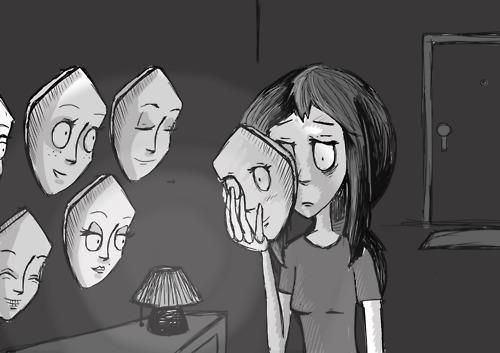“Nothing and nobody exists in this world whose very being does not presuppose a spectator,” writes Hannah Arendt (2003). Her words suggest that our sense of self depends on being seen by others. In today’s digital culture, this “spectator” multiplies through likes, comments, and followers. Every post becomes a small stage where we perform identities for invisible audiences. Have you ever wondered whether the version of “you” online truly reflects who you are?

Goffman (1959) describes the self as a performance shaped by social situations. On the “front stage,” individuals adjust their language, appearance, and behaviour to meet expectations and create a desirable impression, while the “back stage” represents the private, reflective self that can act more authentically. His dramaturgical model helps explain how people constantly move between these two spaces to manage impressions. Scannell (2007) extends this by suggesting that communication is not only the transmission of information but a process of social interaction through which identity is enacted. Social media has turned this process into an everyday practice — every photo, caption, and post becomes part of how we perform ourselves online.

As someone who also spends time editing photos and crafting captions, I often notice how carefully I manage my own “front stage.” Influencers do this on a larger scale, posting idealised versions of their lives that seem effortless but are often carefully constructed. These performances are not entirely false but strategically curated — an example of what could be called “managed authenticity.” They reveal how social media can both empower self-expression and pressure people to maintain a certain image. Behind these polished posts may lie fatigue, pressure, or insecurity that remain unseen. Sabreen Haziq (2023) calls this a “mask” that attracts positive attention and helps people fit into the audience’s gaze, but it can also blur the line between performance and authenticity.

Still, not all interactions are performances. Sometimes vloggers or friends reveal genuine emotions that go beyond impression management. As Haziq reminds us, “the truth is not always hidden; sometimes people are simply being, not performing.” Perhaps performing online is not about being fake but about learning how to be seen. As Arendt’s words remind us, visibility is a condition of being human — yet within that gaze, we can still choose how to remain sincere, flexible, and aware: recognising when we perform, and when we truly connect as ourselves.

References
Arendt, H. and Baehr, P. R. (eds.) (2003) The Portable Hannah Arendt. London: Penguin Books.
Goffman, E. (1959) The Presentation of Self in Everyday Life. New York: Doubleday.
Scannell, P. (2007) Media and Communication. London: SAGE Publications.
Haziq, Sabreen. Putting the Best Digital Self Forward in the Age of Social Media. 2019, https://medium.com/@haziqsabreen25/putting-the-best-digital-self-forward-in-the-age-of-social-media-d3dbec422b73


I think you’ve skillfully employed Goffman’s dramaturgy and Arendt’s theory of “visibility” as frameworks to analyze the tension between “front-stage performance” and “back-stage authenticity” on social media. I particularly resonate with your concept of “managed authenticity.” At the same time, your analysis avoids a simplistic black-and-white critique, instead focusing on the complexities of digital identity construction. I also look forward to seeing you explore more deeply how, when “performance” becomes a necessity for survival (as in the influencer economy), users engage in subtle acts of resistance—such as occasionally sharing vulnerable moments—to preserve their sense of self-integrity. This dynamic could offer a more comprehensive explanation of the double-edged sword effect of social media. Thank you for your insightful presentation, and I’m already looking forward to your next piece.